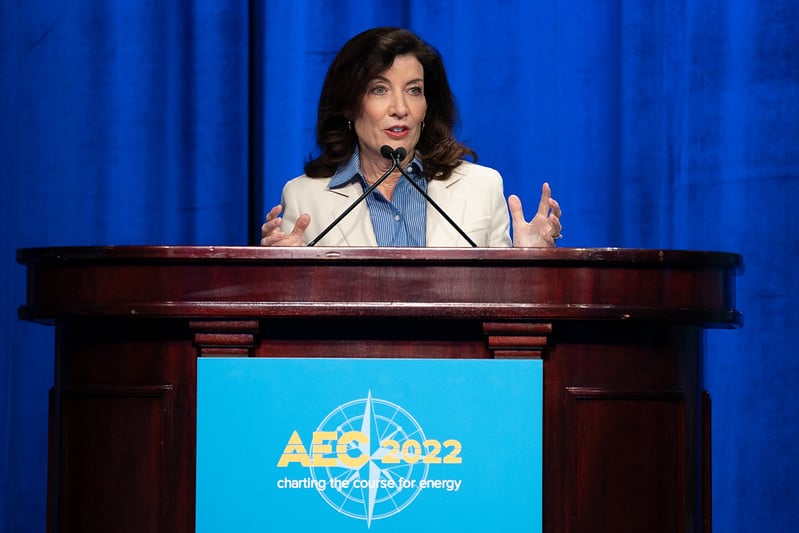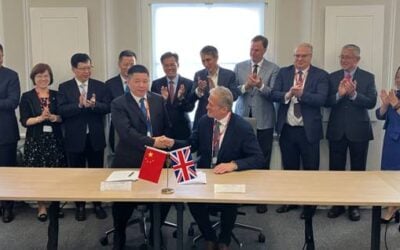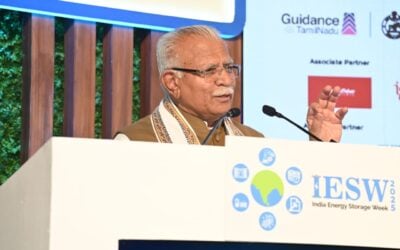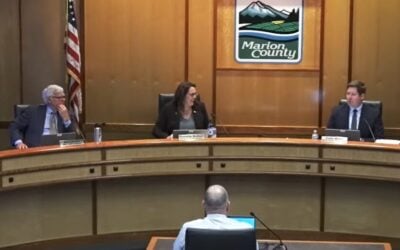
US$16.6 million funding has been committed for five long-duration energy storage (LDES) projects in New York by the US state’s government.
Governor Kathy Hochul announced the awards yesterday at an energy tech conference in New York City. At the same time, Hochul revealed that a further US$17 million will be available through a competitive funding opportunity for projects advancing the development and demonstration of scalable LDES technologies.
Enjoy 12 months of exclusive analysis
- Regular insight and analysis of the industry’s biggest developments
- In-depth interviews with the industry’s leading figures
- Annual digital subscription to the PV Tech Power journal
- Discounts on Solar Media’s portfolio of events, in-person and virtual
The emphasis of the latest awards is heavily on storage using hydrogen as the medium, with three out of the five projects’ technologies based on the gas.
Included among the five are a six-hour duration zinc-based battery storage project, a 3D-printed pumped hydroelectric energy storage system integrated with offshore wind, hydrogen storage paired with nuclear generation, a reversible hydrogen fuel cell and a prototype ‘Solid Oxide Electrolyser Cell’ for hydrogen production.
“Innovative, forward-thinking approaches to transforming the way energy is stored are critical to fighting climate change and transitioning to a clean energy economy,” Hochul said.
“New York is making bold investments in clean energy, and this US$16.6 million in awards for projects that harness renewable energy and under-utilised long-duration energy storage solutions will be a game changer for meeting the state’s ambitious climate and energy goals.”
Funding is coming from the Renewable Optimization and Energy Storage Innovation Program which supports advancements in renewable energy integration and technologies to reduce fossil fuel use. The programme is administered by the New York State Energy Research and Development Authority (NYSERDA).
In descending order of the amount of funding awarded, the projects are as follows:
US$12.5 million to Nine Mile Point Nuclear Station: Demonstration of long-duration hydrogen energy storage paired with peak power generation from nuclear and hydrogen and how it can reduce emissions on the New York Independent System Operator (NYISO) grid.
US$2.7 million to Borrego Solar Systems: Two standalone battery storage systems based on zinc battery technology with six-hour duration of storage, aimed at demonstrating the cost-competitiveness of the tech against lithium-ion. While a technology provider has not been named, the description of a zinc hybrid cathode technology invites speculation that it will come from Eos Energy Enterprises, which makes a system of that type.
US$1.2 million to JC Solutions and RCAM Technologies: Development of a 3D printed concrete marine pumped hydro energy storage (PHES) system to integrate with offshore wind to enhance grid reliability and provide peaking power capacity.
US$100,000 for Power to Hydrogen: Develop Clean Energy Bridge, a proposed technology for reversible fuel cells which can produce and store hydrogen.
US$100,000 to ROCCERA: Evaluation and demonstration of prototype ‘Solid Oxide Electrolyser Cell’ for clean hydrogen production that can be manufactured to scale.
‘We have very ambitious goals’
New York is targeting the deployment of 6GW of energy storage on its networks by 2030 as it pursues the aggressive energy transition path laid out in the state’s Climate Leadership and Community Protection Act policy. By 2030, 70% of electricity in New York needs to come from renewable sources.
The 6GW by 2030 target is actually double what was originally introduced by Hochul’s predecessor Andrew Cuomo. Hochul announced the revised target at the start of this year. As such, the state government is expected to now formulate a revised 2025 interim target too – up from Cuomo’s interim 1,500MW benchmark.
“We have very ambitious goals, but I know we will meet them because we really have no choice as we talk about green hydrogen, and enhanced battery storage,” Hochul said yesterday at the 2022 Advanced Energy Conference in New York City.
“I mean, these are the challenges that lie before us, but there’s nothing, no challenge that cannot be solved through smart people, the use of technology, create good jobs, create that whole ecosystem right here in New York and be the template for the rest of the world.”
As reported by Energy-Storage.news in April, there is a lot of interest from industry in developing projects that would meet those targets – there was already 12GW of storage in state grid interconnection queues five months ago. However, it is unlikely much of that capacity is long-duration energy storage of over four hours’ duration.
State agencies like NYSERDA and also public power utility New York Power Authority (NYPA) have recognised the vital role long-duration energy storage will likely play in helping the state achieve its energy system modernisation. NYPA, supplying about 25% of New York’s electricity, has stated LDES is among its key strategic focuses over the long-term.
Another reason to pursue LDES, which is generally considered to include a broad suite of non-lithium technologies, is that due to the high population density and build-up urban layout of New York City in particular, New York has placed some restrictions on siting lithium-ion battery storage in and around buildings due to possible safety concerns.
That has been given as one of the drivers behind the further US$17 million funding opportunity. Hochul’s office said that only pre-commercial technologies are eligible. The funding round aims to support hydrogen, electrochemical, thermal, mechanical and other types of tech that can offer cheaper, better performing, easier-to-site and effective energy storage, and aid renewable energy integration. NYSERDA is accepting proposals until 17 October.






